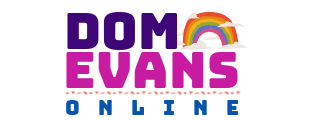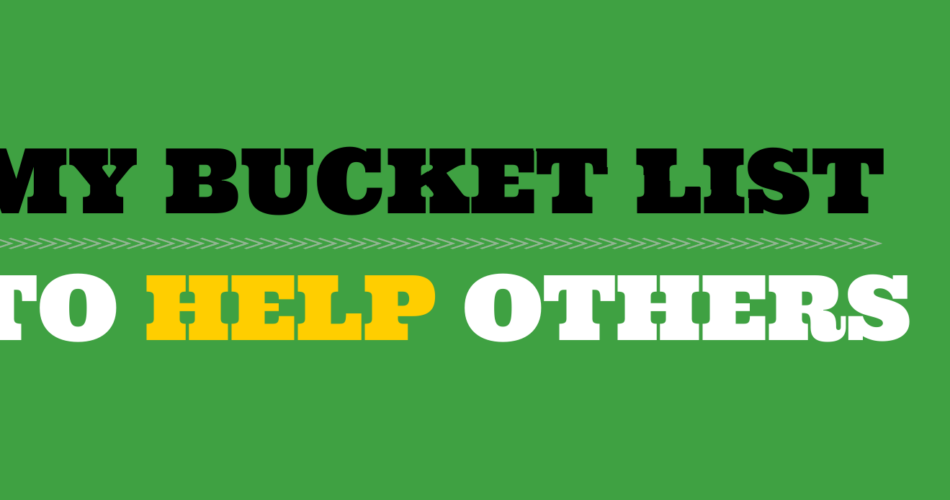Bucket lists are fun to make. They are fun to dream about. There are things that you dream of doing one day. Some of them are realistic. Some of them are magical. But at the end of the day, it’s all about listing what you dream of doing before you die.
I currently work in Hollywood and I eventually dream of making/selling television and having enough money to make a difference in the world.
For me, I’ve thought a lot about making a bucket list for when my dreams one day come true..
Being disabled in a world that’s not accessible, there are many things that I would love to do that seem simple to other people. Things like traveling across the ocean seem extraordinary when you cannot get on an airplane, for example.
But when I was thinking about my ultimate bucket list I was thinking about what I wanted to do to help others. Not necessarily the dreams I have for myself.
My first goal is to have enough money that I can pay for my own home care for the rest of my life. My second goal is to do the same for my son who is autistic. Securing our future is the first thing I must do.
But I want to be able to do more than that. I want to be so successful that I can help the rest of the world.
My bucket list is about all the things I want to do to make the world better. To use whatever privilege I happen to have and rectify the harm that my family caused when they came to the US.
So, here is a list of things I dream of doing, once I have the security to stay alive and be able to do these things.
Some of them may seem a bit fanciful but they are my dreams. They are on my bucket list. They can be whatever I want in my imagination that I believe could become a reality.
1. Free Accessible Apartment Complex
The first thing I’ve spoken about quite a bit. During the pandemic, I had a dream about an apartment building complex. It had a ramp that went around the interior outer wall of the building, so if elevators don’t work, people can always get out.
In light of the current ongoing pandemic, and in the event of another pandemic the entire complex could be secured so people could quarantine and still manage to stay alive.
Nobody would have to pay rent. When you are given an apartment you can live there as long as you need to but when you want to move or don’t live there for some other reason the apartment is given to a new person and those terms apply to them.
All utilities such as water, trash, etc. are provided free of charge.
The maintenance crew lives in the building and also gets paid a living wage to fix things.
The first floor has an exterior shopping area. The building is supported through revenue through leasing out space to businesses that pay to lease in the building.
There is a fund that keeps the building running so people don’t have to pay anything.
Everyone who works in the building lives there so that if there is a quarantine again there is no outside exposure.
There is a play area outside that only residents can access for families.
Every apartment is at least 1500 ft.² and accessible for wheelchairs of all sizes.
There is an emergency on call PCA service for disabled people in case they need help.
In the basement, there is a school area and daycare center for children that live in the building to attend with a great curriculum that teaches them about empathy and the true history of the world.
2. Free Accessible living communities.
Buying up homes in neighborhoods to make communities similar to the apartment plan above. Again nobody pays for rent.
If you live in the home you get to keep it rent-free. If you want to move or leave for another reason, you relinquish your lease.
3. Buying up abandoned crumbling housing.
Buying up blocks, fixing the houses that can be fixed, demolishing the others and creating a sustainable garden and fruit tree area. Letting the people that live in those communities run it.
Planting more trees around all of these neighborhoods for more oxygenation.
Giving the houses back to the communities that live there for free. Creating a fund to help them pay taxes on their housing.
4. Reversing Gentrification
What’s the opposite of gentrification? Going to neighborhoods that are being gentrified or have gentrified and buying up gentrified buildings/businesses only to get them back free of charge to the communities that have been bought out.
Giving those buildings to business people in the communities that are being harmed by the gentrification free of charge. Helping them get settled so their business can succeed.
You try to stop gentrification by returning the businesses and the real estate to the communities that have been harmed by the gentrification.
5. Giving the Land Back
Buying up as many of the places I lived in growing up and returning them to the Indigenous people that were forced from this land so my ancestors and myself could eventually live here.
Leaving any properties I own once I have passed on to the original guardians of those lands. Indigenous people do deserve their land back.
6. Working on a campaign to give back public parkland and plant more trees
Starting with Donald Trump Park in New York, which is an abandoned park that could be being taken care of by Indigenous people.
Fighting a fight to ensure that all of the public parkland is given back is a priority in my mind.
While we are at it, planting more native species – trees, plants, flowers, etc. to help combat global warming and the removal of many species due to urban growth.
7. Learning about my family history of harm
As a white person, I feel it is imperative to learn about my family history as much as I can. Only then can I learn where my family has created harm. Where are we resilient? Where have we stolen from others? Where have we given back?
Only then can I truly address the harm that my family has caused. Only then can I help to combat white supremacy.
I know that my maternal family has caused harm to Indigenous and Black people and I want to find out how I can address that harm in a constructive way that makes it different for the individuals and communities my family harmed.
This is how we reckon with our past as colonizers. This is how we make the world better. We learn about who we are and we try to address the harm that has been caused that has allowed us to live in this world.
8. Making Honest Curriculum
One of my greatest joys was making a curriculum for my son when I was homeschooling him. I recognize that lessons many children are taught are inaccurate and often harmful to marginalized people.
I want to have enough money that I can hire a bunch of the best thinkers in the world. A multicultural group that develops a school curriculum that addresses the following things:
– Children learn academic subjects but also learn life skills so that once they get out of school they can transition to adulthood easier, life skills classes are a must
– ASL from kindergarten onward. You never know when you will have to use alternate communication in your life. We all must be able to at least understand it if we are able. Accommodation made for disabilities of course.
– History that is true to the racist, homophobic, ableist past written by the communities that are impacted by such marginalization.
– Shorter school days with more opportunity for hands-on learning.
9. A school for disability representation and film/media creation
As someone who understands the true dangers of harmful representation I would like to develop a school that teaches about not only what we know about disability representation, but how to address some of the major issues with representation that occur and harm disabled communities.
10. Programs to address food and water insecurity
Knowing that there are people in the world that could end hunger for everyone makes me angry because they have not done that. If I had the ability to end hunger I would. No one deserves to go hungry. No one.
I would like to use whatever I can to address harm to our food and water systems.
I know that Indigenous practices are the best way and I would use my money to help Indigenous communities protect our water supply.
Water should be clean. Water should be free. Water should be accessible to everyone.
I would also develop things like the backpack program where children facing food insecurity would be able to receive regular backpacks of food to help their family.
Additionally, through the aforementioned programs, I really love the idea of creating gardens that are so sustainable. An Indigenous horticulturist I know has talked about the importance of creating your own food systems in your communities as food becomes less and less accessible and available to people.
I’m going to stop at 10 because while I’m sure I have other good ideas, these are the most important ones I want to address to fix problems I see in the world.
I truly dream of making enough media that I can afford to do some of these things and I put these on the Internet in the hope that somebody who does have the money to do these things finds this list and is inspired to do these things themselves.
We are a world that is meant to depend on each other. We must do better. We must be better. Only then can we truly help heal the world.


Comments